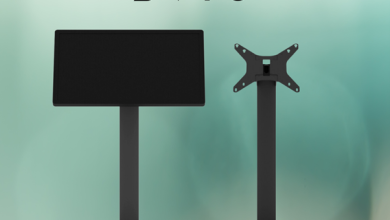When shopping for a used car, you might come across terms like Cat N and Cat S. These are classifications used by insurance companies to describe the extent of damage a vehicle has sustained and whether it’s still safe to drive. If you’re not familiar with these terms, understanding the key differences between a Cat N and Cat S car can be essential in making an informed purchasing decision. In this article, we’ll break down the distinctions between these categories, what they mean for you as a buyer, and how they affect the long-term value and safety of your vehicle.
What is a Cat N Car?
A cat n car refers to a vehicle that has sustained damage in an accident but has no structural damage. The “N” in Cat N stands for “non-structural,” which means that while the car may have been written off by an insurance company, its core frame and structural integrity remain intact. Damage in these cases could involve body panels, electrical systems, or minor mechanical components. Although these cars can be repaired and driven again, they will always retain their Cat N classification, which may impact their resale value. Cat N cars are often cheaper and can offer a good deal if the necessary repairs have been properly conducted.
What is a Cat S Car?
On the other hand, a Cat S car is a vehicle that has suffered structural damage but can still be repaired and put back on the road. The “S” stands for “structural,” meaning the car’s chassis or other structural components were damaged in an accident. While a Cat S car can be made roadworthy after repairs, the damage could affect the vehicle’s long-term safety and performance if not properly addressed. Insurance companies classify a car as Cat S when the cost of repairs exceeds a certain percentage of the car’s market value. These cars are often sold at a lower price but may require more attention in terms of safety inspections and repairs.
Key Differences Between Cat N and Cat S Cars
The primary difference between a Cat N car and a Cat S car is the type of damage they have sustained. In a Cat N car, the damage is purely non-structural—such as to body panels, lights, airbags, or electrics—meaning the car’s fundamental safety and driving performance aren’t compromised. In contrast, a Cat S car has undergone structural damage, which may affect the car’s chassis, frame, or crumple zones. This difference is critical because structural damage is more difficult to repair and can have long-term effects on the car’s performance, safety, and reliability.
From a financial perspective, both Cat N and Cat S cars are typically cheaper than their non-categorized counterparts, but Cat S cars may require more extensive repairs to ensure they are safe for the road. As a result, many buyers tend to prefer Cat N cars over Cat S vehicles due to the reduced risk of hidden structural issues.
Safety Considerations: Cat N vs. Cat S
One of the most significant concerns when buying a used car, especially a categorized one, is safety. Since Cat N cars don’t suffer from structural damage, they are generally considered safer once the non-structural issues have been properly repaired. As long as the repairs address all the damage, a Cat N car should perform just as well as any other vehicle. However, it’s always a good idea to have a mechanic inspect the vehicle before purchasing to ensure no lingering issues could impact safety.
Cat S cars, however, pose a higher risk. Structural damage can weaken the car’s integrity, especially if it’s not repaired to manufacturer standards. Even if the car looks fine externally, underlying issues with the frame or chassis can compromise its safety during future accidents. For this reason, Cat S cars should undergo thorough inspections, and you should only buy from a reputable dealer who can provide proof of the repairs carried out.
Impact on Resale Value and Insurance
Both Cat N and Cat S cars typically have lower resale values compared to non-categorized vehicles. This is because many buyers are wary of purchasing a car that has been written off by an insurance company. Even if the car has been perfectly repaired, the fact that it’s labeled as a Cat N or Cat S car will remain on its history, impacting its value. Cat N cars tend to have a slightly better resale value than Cat S cars due to the absence of structural damage, which buyers often see as a safer and more reliable option.
Insurance premiums can also be higher for Cat N and Cat S cars, as insurers view them as higher risk. Some insurance companies may refuse to insure Cat S cars altogether, or they may require additional inspections before offering coverage. It’s essential to check with your insurer before buying a categorized car to understand the potential impact on your insurance rates.
How to Inspect and Buy a Cat N or Cat S Car
When considering the purchase of a Cat N or Cat S car, it’s crucial to conduct a thorough inspection. For Cat N cars, check for any signs of cosmetic or non-structural damage that may have been poorly repaired. It’s also important to ask for the vehicle’s MOT history and any repair documentation to ensure the car was properly fixed and is roadworthy. Hiring a qualified mechanic to perform a pre-purchase inspection is highly recommended, especially for Cat S cars, where structural damage may not be immediately visible.
For Cat S cars, in particular, request documentation detailing the exact nature of the structural damage and the repairs conducted. Ensure that the repairs were done to a high standard and that the car has passed a Vehicle Identity Check (VIC) to confirm it’s safe to drive. Without these checks, you may end up with a car that poses significant safety risks on the road.
Which is Right for You: Cat N or Cat S?
The decision between buying a Cat N car or a Cat S car ultimately depends on your comfort level with risk, budget, and intended use for the vehicle. If you’re looking for a safe, reliable vehicle and are concerned about the long-term safety implications, a Cat N car may be the better option, as it doesn’t involve structural damage. However, if you’re open to taking on the risk associated with a Cat S car—perhaps because it’s a bargain and you’re confident in the quality of the repairs—it could still be a viable choice.
Regardless of which you choose, always approach the purchase of any categorized car with caution. Thorough inspections, proper documentation, and a clear understanding of the vehicle’s history are essential to ensure you’re getting a good deal and a safe car. Whether you go for a Cat N or Cat S car, being informed and careful will help you make the right decision.
Conclusion
Both Cat N and Cat S cars offer the potential for significant savings, but they come with different levels of risk and safety considerations. A Cat N car, with non-structural damage, is generally a safer and more reliable option, whereas a Cat S car has undergone structural damage and requires more caution before purchasing. Understanding the key differences between these categories is essential in making an informed choice that fits your needs and budget. Always conduct thorough research, obtain an independent inspection, and weigh the long-term implications before committing to a categorized vehicle.





